Equipment
First Hit: Callaway Big Bertha Alpha 815 and Double Black Diamond Drivers
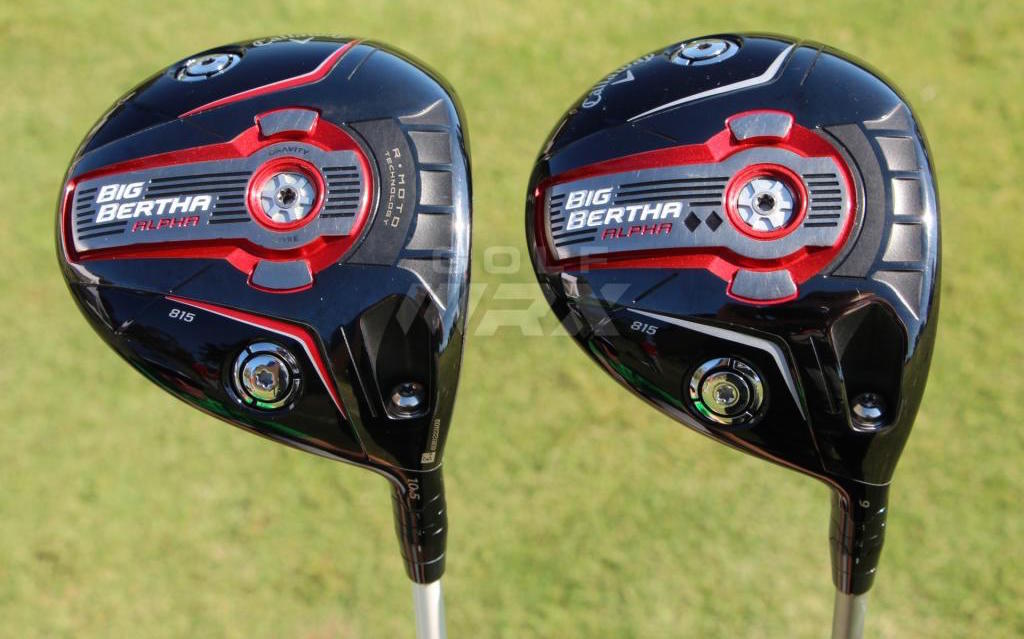
Some golfers need a driver with a low center of gravity, while others need a driver with a higher center of gravity. Callaway’s two new Big Bertha Alpha drivers are designed to help both types of players.
The Big Bertha Alpha 815 ($449) and Big Bertha 815 Double Black Diamond ($499) use two distinct shapes and three forms of adjustability to help golfers dial in the launch, spin and shot shape that will give them maximum distance. They’ll be in stores November 13.
The hallmark of the two new drivers is the inclusion of Callaway’s Gravity Core technology, which allows golfers to adjust each driver’s center of gravity (CG) lower or higher in the clubhead.
It works like this: Insert the Gravity Core with its heavy side down (closer to the sole) and the driver will produce less spin. Position the Gravity Core with its heavy side up and the driver will produce more spin.
More spin? “Who needs that,” you might be saying.
According to Evan Gibbs, Callaway’s manager of performance analysis, plenty of golfers.
Callaway debuted the Gravity Core in its 2014 Big Bertha Alpha driver. While it wasn’t as popular as the company’s 2014 Big Bertha driver, it was an important fitting tool for many golfers on the PGA and European tours.
[quote_box_center]“If 90 percent of the players were in the low-CG position, we’d say, ‘we don’t need this mid-CG position,’” Gibbs said. “But the split was about even. That validated that there was value in having this Gravity Core.”[/quote_box_center]
It’s not just better players, however, who can benefit from a higher CG.
[quote_box_center]“Some people need a little big higher CG in order to generate enough spin,” he said. “And if a player tends to contact the ball high on the face, they tend to lose ball speed with a low-CG club.”[/quote_box_center]
Big Bertha Alpha 815
The new Big Bertha Alpha 815 brings the Gravity Core to a driver that is much more forgiving than the 2014 Big Bertha Alpha. It’s built on a 460-cubic-centimeter chassis that’s similar to the 2014’s Big Bertha driver, with a large profile at address that boosts its moment of inertia (MOI) to make it more forgiving.
The Big Bertha Alpha 815 also has a Forged Composite crown that makes it surprisingly low spinning for its level of forgiveness — unless the Gravity Core is in the “up” position, that is.
Big Bertha Alpha 815 Double Black Diamond
The Double Black Diamond has all the technology the Alpha 815 has, but as its name indicates it was designed for experts. The low, forward CG position that allows it to be so low spinning also makes it the company’s least forgiving driver for 2015. In other words, golfers should steer clear of the Double Black Diamond if their main goal is to improve performance on mishits.
According to Gibbs, the Double Black Diamond is about 100 rpm lower spinning than its predecessor, the 2014 Big Bertha Alpha, and it adds more forgiveness to shots hit high on its face. That’s partly thanks to the company’s new RMOTO technology (also used in the Alpha 815), which is a new geometry on the inside of the club head that allowed engineers to remove about 3 grams of weight from the face and place it lower and deeper in the head to improve MOI.
Visually, the Double Black Diamond has a rounder, more opened appearance than the 2014 Big Bertha Alpha at address that should resonate with better players.
Enough talk, where are the numbers?
I had a chance to test the Big Bertha Alpha 815, the Double Black Diamond and Big Bertha V-Series drivers at Callaway’s Ely Callaway Performance Center in Carlsbad, Calif., on a Doppler Radar launch monitor to see just how different the three drivers would perform.
Each of the drivers was hit with the same shaft and had nearly identical measured lofts. Each driver was also tested with the same shaft, a Mitsubishi Rayon Second-Generation Diamana D+ 70TX at 45 inches.
Testing process: I hit about six shots with each club in the following order: V-Series, Double Black Diamond and Alpha 815. I then hit about five more shots with each club and they were hit in the same order. The outliers – those one or two shots that were radically different from the eight or nine other shots – were then deleted to create these averages below.
The Numbers
The numbers explained
Don’t walk away from this story thinking that the Double Black Diamond is Callaway’s best driver for 2015 because of my experience. What’s important is to notice the distinct performance of each head.
V-Series
V-Series is Callaway’s most forgiving 2015 driver, with a CG that is higher and more rearward than the other drivers in the line. For most golfers, this will translate to more consistent ball speeds across the face, but it will also contribute to the lower launch and higher spin that I saw in my testing.
Alpha 815
This will likely be Callaway’s most popular driver, both at retail and on the professional tours, because of its balanced design. My numbers show its ability to launch the high with a fairly low amount of spin and still retain a high level of ball speed on mishits.
Double Black Diamond
Most golfers won’t be a fit for a Double Black Diamond, but when they are the results will be fantastic. With nearly identical builds, the Double Black Diamond was an average of 9 yards longer than the V-Series thanks to its higher launch and lower spin.
How did they perform on mishits?
I saw a ball speed variance of 4.4 mph with the Double Black Diamond. That doesn’t sound like much, but it was by far the worst of the three models. The Alpha 815’s ball speed variance was a mere 3.3 mph, while the V-Series was just 1.7 mph.
Shafts and Specs
The Alpha 815 driver will be available in lofts of 9, 10.5 and 12 degrees and comes stock with Fujikura’s Motore Speeder 565. The Double Black Diamond will come in lofts of 9 and 10.5 degrees with Aldila’s Rogue Silver 60 shaft.
Click here to see what GolfWRX Members are saying about the new drivers in our forum.
Don’t like those offerings? Callaway is offering the following 13 shaft options at no upcharge:
- Mitsubishi Rayon Bassara 42
- Mitsubishi Rayon Bassara 52
- Matrix Ozik White Tie 50
- Aldila Rogue Silver 60
- Matrix Ozik Black Tie 70
- Fujikura Motore Speeder 565
- Fujikura Motore Speeder 665
- Fujikura Motore Speeder 765
- Second-Generation Mitsubishi Diamana S+ 62
- Matrix Ozik Red Tie 60
- Mitsubishi Rayon Fubuki ZT 60
- Mitsubishi Rayon Fubuki Z 50
- Aldila Tour Green
The Alpha 815 comes stock with 7-gram and 1-gram interchangeable heel-and-toe weights, while the Double Black Diamond comes stock with 5-gram and 1-gram weights. Moving the heavier weight to the toe of the club will create more fade bias, while moving it to the heel of the club will create more draw bias.
Both drivers also use Callaway’s new Opti-Force hosel, which is slimmer than previous versions yet still compatible with 2014 driver models. It’s 3-degree range of adjustability (2 degrees up, 1 degree down in 1-degree increments) also includes two independent lie angle settings: neutral and upright (more draw bias).
Click here to see what GolfWRX Members are saying about the new drivers in our forum.
- LIKE85
- LEGIT22
- WOW22
- LOL9
- IDHT6
- FLOP2
- OB4
- SHANK25
Equipment
GolfWRX Deep Dive: XXIO’s 13 Series

What’s the most well-respected, high-quality brand of golf equipment not frequently played by PGA Tour pros? If you ask a few of your local fitters, there’s a good chance they’ll respond “XXIO.” (That said, there may be some variety in the pronunciation…more on that later)
Male professional golfers don’t play XXIO’s clubs because they’re not supposed to, which is to say, the majority of the company’s clubs are not designed for them. The average driver clubhead speed on the PGA Tour is more than 115 mph. XXIO’s 13 lineup of metals and irons is designed for players who swing their drivers at less than 100 mph. From a design perspective, it’s a completely different equation for a completely different set of needs.
Lightweight, forgiving, and easy to launch are the watchwords for XXIO’s 13 Series. And if you’re not swinging your driver more than 100 mph, your golf game will thank you for learning more about the series in this conversation with Ryan Polanco, General Manager, XXIO.
Check out the full discussion below.

GolfWRX: Before digging into the specifics of the XXIO 13 lineup, can you settle a debate within the golf community? How do you pronounce “XXIO”?
RP: (zek) – Like “how the heck are these clubs so light and easy to swing.” (si) – Like “yes” in Español. And (oh) – like, “Oh that ball went a long way’. (zek-si-oh)
GolfWRX: For the average consumer who may have heard of XXIO but not know much more about the brand generally, how would you describe the company’s product offerings and the space XXIO occupies in the golf equipment world? Who generally plays XXIO clubs?
RP: We focus on making the best lightweight and easy-to-swing golf clubs for moderate-swing speed players (below 100 MPH).
From a product perspective, nearly every female golfer and the majority of men are perfect candidates for XXIO golf clubs. We have some of the best ladies’ clubs out there because we focus our engineering on slower swing speeds, and that requires a very different approach than every other club manufacturer out there. We also have incredible men’s clubs because most men fall into the moderate swing speed category as well.

GolfWRX: Digging into the XXIO 13 lineup. Can you briefly describe what unites the series as a whole, what XXIO is offering golfers the 13 lineup of driver, woods, hybrids, and irons?
RP: The big thing with XXIO 13 is that this is the 13th generation of lightweight golf clubs, so our engineers focused on making these clubs easier to swing in addition to being lightweight. Previous technologies like Weight Plus and new ones that focus on enhanced COR: New Bi-Flex Face, L-Groove irons, and enhanced aerodynamics (new ActivWing) are what unite this 13th generation of XXIO golf clubs.
GolfWRX: XXIO irons have historically been excellent performers in the game improvement space. What can you tell us about the XXIO 13 irons?
RP: The enhanced Rebound Frame technology in the Irons helps to increase ball speed (especially on shots struck lower on the face) by utilizing alternating zones of rigid and flexible sections. New for XXIO 13, we have internal grooves cut in the heel and toe to save mass and create greater flexibility for more ball speed, which previous generations did not include. These improvements help to increase COR in the center and lower portion of the face. Additionally, these irons feature the same face material we use in our fan-favorite driver to help with ball speed.

GolfWRX: Similarly, for years, we’ve seen XXIO’s drivers as a fitter favorite in the lightweight category. Can you discuss how the XXIO 13 driver continues this trend?
RP: Yes, the XXIO driver is normally most golfers’ introduction to XXIO because they perform so well and are generally much different from the golfer’s gamer during a fitting. New for XXIO 13 is a technology called BiFlex Face which helps to expand the sweet spot, while an all-new ActivWing helps golfers hit the sweet spot more often; something many golfers will benefit from. The BiFlex Face and ActivWing technologies work together to give XXIO 13 golfers better control of their clubface, more ball speed off the face, and more forgiveness on mishits.
GolfWRX: Finally, in terms of fairway woods and hybrids, what is the XXIO 13 lineup bringing to the table?
RP: Technology-wise, BiFlex Face carries from the driver into the fairway woods for an expanded sweet spot. Our Canon Sole has been upgraded as well. Canon Sole is a floating weight pad that optimizes launch and distance, while also allowing space for improved face flex, which is especially helpful for shots struck lower on the face (a common mishit for golfers with moderate swing speeds).
GolfWRX: Among golfers who play XXIO clubs, it seems like many have been fit into driver-through-irons sets. What have you seen in terms of set makeup for golfers who go “XXIO 13” in driver-through irons? (number of fairway woods, hybrids, lofts, etc)
RP: Yes, that is normally the case. Typically, we will see golfers dive into the driver first and then continue to add clubs until they have a full bag once they experience the benefits of XXIO. Once you have a lightweight and easy-to-swing driver, having heavier, stiffer clubs through the rest of your bag just feels so different. The lofts and combinations will vary, but a driver, three fairway woods, a hybrid, and five or six irons are a common setup in many bags.

Learn more about XXIO’s 13 Series here and on XXIO’s website.
- LIKE1
- LEGIT1
- WOW0
- LOL0
- IDHT0
- FLOP0
- OB0
- SHANK0
Equipment
Q&A: The truth behind Bryson DeChambeau’s new Avoda irons from company founder Thomas Bailey

During the week of the Masters, news broke that Bryson DeChambeau was using 3D-printed irons from a relatively unknown company called Avoda Golf.
DeChambeau fired an opening-round 65 at Augusta National using the irons, sending the equipment world into a frenzy trying to figure out who the company is, and what’s different about the irons. Information about the irons, however, wasn’t so easy to find. No one really knew much about Avoda or his new iron designs.

Then, ahead of the 2024 U.S. Open at Pinehurst, GolfWRX.com got its first in-hand look at the irons, and DeChambeau provided a public explanation of the flight-correctional “bulge” that the irons have on their faces.
DeChambeau went on to win the U.S. Open using the bulge-faced 3D-printed irons, but we still didn’t know much about the irons themselves.
Until now.
Recently, GolfWRX.com spoke to Thomas Bailey, founder of Avoda Golf, to find out more about the company, and DeChambeau’s mysterious irons. Enjoy our full Q&A with Bailey below!
Andrew Tursky, GolfWRX.com: So what is Avoda? How did the company get started in the industry?
Thomas Bailey, founder of Avoda Golf: Originally, I just wanted to make myself a set of golf clubs. That’s the truth. So that’s a year ago to date of Bryson winning the U.S. Open.
It’s been a crazy year.
I wasn’t quite happy with what I was looking for from a club and what was available on the market. I played around with a lot of the same-length products for a while. I got to the point where I was grinding the heads myself, taking heads and grinding them away to get the weights I wanted, to get them the appearance how I wanted. And I got pretty dialed in on a set I wanted over a two-year period. It just felt like it had been mauled by a bench grind.
So we were using raw heads, from Kyoei, and taking them down to weight. When I say we, that’s myself and Mike Schy, Bryson’s long-time coach from out at Dragonfly Golf Club in California. We were just grinding away golf clubs, seeing if we could create the ultimate club for what I wanted; and we got it. It just felt like it had been attacked by a bench grind.
So the mission then came in to make it presentable. My brother actually worked in the firearms industry and had a lot of supplier and manufacturer relations, so he worked on finding me a manufacturer who would be happy to put together the clubs for the specs I wanted. And we got there. We went through a number of suppliers and manufacturers to try and get to the point of what we wanted. We got it and had a prototype set come in around October last year, which was spot on. It was exactly what I wanted.
The goal was when I got that set in was to maybe make 50 sets and sell them, and fund my own golf career and my own golfing habits.
So right around that time, Bryson was coming back into town. He just had a win and shot 58 with the new driver in the bag, and he wasn’t happy with irons. They didn’t complement what he’d got right with the driver. The driver had more onset with more bulge to it. The swings he was making with that and having great success off the tee just didn’t work when he went to an iron. So he was saying say he would be fighting his iron play, fighting a left miss if he made the swing he wanted to, and then fighting a right miss to compensate for it. And that would then leak back into the driver to where he’d be missing with the driver, as well. He knew he needed new irons in the bag.
I know him and Mike Schy had explored a few options to try and find someone to do the irons. Right around that point, I told Mike that I’d been working on my own set of irons, that we could always explore doing something for Bryson, as well. And that’s kind of where it started. It’s like, well, nothing to lose. Let’s go for it. Bryson was in town in September, testing some irons and stuff again, having the raw Kyoei’s and grinding them down, getting the appearance he wanted.
He was on the bench grind, as well, and they got a head, and then the conversation started around putting bulge into an iron.
Mike goes, “Well, why don’t we test bulge on an iron?”
And Bryson asked, “Can we do that?”
And it was like, well, let’s find out.
So, he actually went into the academy where he’s got his workshop and started grinding away the toe on the Kyoei heads to try and put a little bit of curvature to it.
Wait, Bryson himself was on the grinding wheel?!
TB: Bryson was on the grinding wheel shaping the club to how he wanted them to look.
We actually had my partner’s dad, he was welding up the back of the club to give him extra weight to play with on the grinding. So it was a right interesting process, but he got it down to the shape he wanted, and then they started grinding. Mike went back into the academy and started grinding away some other toe section to get some curvature on the face to start testing the bulge-face idea, and found out very quickly when he was hitting them.

GolfWRX’s in-hand photos of Bryson’s 5-iron at the 2024 U.S. Open
Bryson went back to hit them and said, “Yeah, this is it. This is what we need to test.”
So, I set about making two identical heads – 7-iron heads – to the specs he wanted to see weight-wise and the width of the head he wanted to see. And they were CNC forgings to start with. So we had a flat head, or flat face, and then we did an identical club with a curved face, so we could hit them, start getting some numbers, and seeing what the difference is between them. And immediately, it was a night-and-day difference on the mishits, and just the overall performance of the club. It was more than just the mishits, so we knew we needed to put it into a full set.
He had very specific requirements he wanted to see in terms of the width of the head, the appearance from the top line. He liked the thicker top line. He liked the wider blade. When you start doing that, the head weight goes through the roof, so it couldn’t be a one-piece forging. It had to be hollow-body, which also had the advantage of reducing the spin rate, which is something he’d been struggling with for a while.
So we went about putting together the first full prototype set, which came in, we had it completed around end of January this year. He did some testing with it, took it to Mayakoba, had it in the practice rounds there. He decided not to put it in play just because we overdid the face curvature to begin with, to where we’d actually see the opposite miss, not the ideal. And then we went out making another prototype round, tidying up some of the aesthetics on it a little bit, but, again, dialing in the face curvature.

Bailey says Bryson prefers irons that have thicker top lines, wide faces from heel-to-toe, onset, and a square, symmetrical-looking face (as much as possible when there’s a curve) / Photo credit: Avoda Golf
They arrived the week before the Masters. We strongly believe we were still in a prototyping phase there, and did not expect them to be in play at The Masters. So when we found out Tuesday at the Masters that they were going in play, we went, “Uh, right.”
So him switching into the irons at the Masters was news to you, too?
TB: It was, well, there was some stuff that was going on leading up to that. He had them. He was in testing with them a week and a half before, and he took them to Miami, with the full intention of playing them in Miami.
We sent some stuff off for USGA testing, because, again, we’re still in prototyping at that point. So we sent them off. We wanted to get them tested just in case he did put them in play. We had a couple of groove issues that had to be sorted with the 3D-printing process, just some inaccuracies in the groove. His manager, Connor (Olson), over in Florida, was working hard on fixing them over the weekend before The Masters, and then we had them re-tested on the Monday.
Half the set was good to go, but we needed to get another set over there to fix a couple of clubs. So I get a call on Monday afternoon of Masters Week. I’m on the West Coast, in California, and I get a call at 4:30 in the afternoon from Connor saying we need the other set here, right now. And I’m thinking, “How am I getting this other set for you anytime soon?” And if it was Wednesday, it would have been too late for him to put them in play.
So, luckily, we rushed over to UPS. The guy said that the out-of-state overnight had already gone. We’d missed it, but he put the address in, and said we’ll see if we can get it out on the first shipment in the morning. And when I’m putting the address in, he goes, obviously, reading out the address in Augusta, and he goes, “Oh, Augusta. You going to the Masters.”
And I said, “Yeah, these are Bryson’s golf clubs.”
And he’s like, “You’re kidding me.”
Luckily, he was a golfer.
He goes, “You’re kidding.” And I’m like, “No, these are legit Bryson’s golf clubs. We need to get them there.”
So they ended up rushing them out to the truck, luckily getting them on the truck, and they made it to Augusta at 7:00 a.m. the next morning. So Connor did some work on them, and then they got approved to be used midday on Tuesday. But when we had the issues come back just before the Miami event for LIV, he didn’t put them in the bag there. So we kind of thought, right back to the drawing board. We’ll go again, get ready for the next one. But then it was a miracle to get them ready by Tuesday, we just didn’t see that coming. So yeah. And then they were in the bag.
That’s such an unbelievable story.
TB: Yeah. It’s pretty crazy.
Crazy. I mean, it seems like, you know, there was a lot of stuff going on behind the scenes during the week, but we didn’t really know what was happening, because he didn’t publicly come out and say everything. It’s truly unbelievable.
TB: And then having the balls to put that set in play on Tuesday of the Masters. I mean, he’d been practicing with it for a week and a half, so he knew it was good, and he was adamant he wanted to play it. So, obviously, we were gutted originally when it came back that we had the grooves issue that needed to be fixed. And then obviously to get it fixed in time. It was kind of an emotional roller coaster for us all, including him.
So with all that going on, the fact he put them in play and then goes out and shoots at opening 65 was pretty incredible to see. Then, obviously, everything went from there.
All of a sudden, it’s like, “Who’s Avoda?”
A lot of emails coming in, and a lot of interested parties.
Yeah I mean, I was scrambling. For my job, I have to keep up with the latest equipment, all the custom stuff on tour, and then all of a sudden he comes out with these. It’s like, uhh, I know absolutely nothing about these! I’ve never heard of them. I don’t know what to say!
TB: Yeah, that was funny. So, yeah, I mean, we registered the company end of last year, and the intention was for me to make myself a set of irons I was happy with, and, it will result in creating a really, really good product and a lot of interest straight away when we had people testing it.
So I thought, “OK, let’s get in 50 sets and sell fifty. Let’s see if we can build this thing to a 1,000 set a year business.” And, yeah, we smashed it a lot quicker than we thought we would. And, obviously, we cannot be more grateful to Bryson for giving us the opportunity to get it going. It’s accelerated us 5-10 years ahead of typical business growth. So yeah, it’s been pretty unbelievable. So it’s all systems go now, and getting people in the position to handle it.
Fortunately, I’ve had a lot of people around me at the time who knew I was working on this equipment and had made comments like, “If this works and this is this is a good product, we want to be there. We want to support it, and help grow the business.”
So when the clubs went in play, I sent text messages to every one of those parties: “It’s happening. Get ready.”
What an exciting moment for you and the company. So when did the 3D-printing aspect of this come in?
TB: So the 3D printing purpose of that was just for rapid prototyping. So, originally, it was CNC, the first test. And then because he needed a hollow-body head to achieve the visuals he wanted, and then all the specs he wanted, we obviously had an option of creating a mold to cast it, CNC-ing it in two pieces, or 3D printing.

3D printing gave us the quickest option. We were testing a whole new element to golf, adding curvature on an iron, and speed, with the limited time of an off-season.
LIV, fortunately, giving him a longer off-season was great. If it was the PGA Tour, I think, well, I don’t know how we would’ve done it. We’d still be in testing, just because of how limited time there is to do that. So 3D printing gave us the option to rapid prototype, get clubs in within a few weeks to test. So, I mean, we really did go from the first full set…design work started late November, and then by late January, we had the first full prototype set.
So without the ability to 3D print that, we wouldn’t have got it done in that time frame, so it allowed us to get it done.
Where are these heads coming from? Like are you 3D printing them in-house? Are you ordering from a third party?
TB: We have an international manufacturer, so it’s third party. We do all the design work – we have a designer that’s doing that for us – and then we outsource the manufacturing. It’s been a pretty crazy process, and we’re learning a lot very quickly.
So how does it work with the consumer product? How is that working right now? How can people buy sets? What is the market saying about those? What is the feedback you’ve seen in testing when it comes to amateurs? Because I know Bryson was talking about his swing speed and how it helps him, but, you know, the consumer audience doesn’t swing it like Bryson. So, like, what have you seen with the translation there?
TB: So the products that are available for purchase right now is that initial set I put together. So I put two sets together initially, which is what we’re calling our combo-length set. I played same length for a long, long time. I’m 5-foot-9-inches with shoes on, so I’m not the tallest player. And then I’ve got freaky long arms. So, for me, I’ve always had to play my clubs slightly on the shorter side. I love the advantages of the same length set, however, playing a shorter 4-iron when it’s already shorter wasn’t helping me that much. So I needed to make the 4-iron, and the 5-iron, where I didn’t see the distance gapping dropping off. I needed to make them a little bit longer. So that’s where kind of the grinding the golf clubs came in, getting on the bench grind, taking some weight out so I could make them longer. That’s where that originally happened. So I had to set this combo-length set. Same length to the 8-iron, then progressively getting longer through the 7, 6, 5 and 4 iron.
So that’s the initial product we put together, and did the testing on. Then we released a same-length as well, because it was still requested, the same-length product. And there wasn’t really any, at the time, there isn’t a same-length forged product available, like a truly one-piece forging for the same-length market. So we wanted to provide that, as well. So we had the same-length set the whole way through, and then the combo-length set.
So that’s what’s available for purchase for the market right now. The testing on those, from what we’ve seen, just being able to bridge the gap between variable length and same length, that hasn’t been done yet. We’ve seen people who swore that they would never go to a same-length club, who are now using combo lengths, where they’re same-length from the wedge to the 8-iron, and they’re loving it. And then we’ve also seen people who swore to same-lengths, who would never go away from the same length, but did maybe struggle with a longer wedge, or struggle with speed on the 4-iron, again, going into that combo length set, so it’s really bridged the gap between the two.
We’re calling it “removing the disadvantages of both,” and just taking the best of both, and putting them into one set. So those are the sets that are available to purchase right now. The specific Bryson one is a 1-of-1 set that’s done just for him. He has the only set of that, because it’s such a specific product to him. He plays super upright and the head weights are very unique. Obviously, the face, as well the hollow-body.
My goal has always been to create a product that helps people get better. That was the one that helped him get better. I believe in the custom fitting approach, as well. I don’t plan to sell a club for the sake of it. Like, yes, there’s a massive demand for someone to purchase a specific set just like his, but it would be more just for the sake of hitting the Bryson Club, you know, as opposed to actually a club that the consumer can get better by using.
Right, right. What’s your playing background? Like, were you a designer before? Were you a player before? A professional?
TB: Bit of everything. So, I played college golf, packed in college golf after two years to try and pursue full-time golf, so I went back to the UK to pursue full-time golf. Had some injuries straight off the bat, golf swing related. So in an effort to try and get myself healthy, get myself back playing, I kind of saw everyone, did everything, and just wasn’t quite getting the results and help I needed.
And then I kind of had to dive down the rabbit hole of figuring things out for myself. Got some good advice from coaches like George Gankas along the way. He actually gave me some good information around how the body can set up, how the body can move to reduce the stress on the body. So driving down that rabbit hole actually got myself healthy again.
And then there’s a lot of other people in professional golf that are also injured at top amateur level. I had people coming to me saying they struggle with the same problems I had, golfing related. And that led me into the coaching route. So I coached full-time for about 3-4 years. Had some success in that. I coached a guy out of injury named Laird Shepherd. Coached him out of injury to winning a British amateur, and then ended up coaching a few guys out on the European Tour pretty quickly.
I always still wanted to play, so in the back of my mind, it was like, right, yes, I learned everything to try and help myself get better. I’ve got to continue to pursue my dreams of playing. So I got back playing pretty much full-time golf, came out to the U.S. the beginning of 2022 to see Mike Schy to actually build up a set of golf clubs. And then, one thing led to the next, and it kind of got me down the equipment rabbit hole, and that resulted in a major-winning set.
Going down the equipment rabbit is quite an accurate statement…
TB: Yeah, I’m always asking, “Why?” You know? I’m like, why why why? I’m that annoying kid that says, “Yeah, but why?”
I know Bryson is always saying why, too. So you guys linking up makes so much sense.
TB: It worked quite well. There’s a lot of things that we like to see that are similar in a golf club, as well, so that helps. It allowed me to go away and do the design work knowing that I’m looking for a similar thing, as well. I think the struggle that maybe he’s had in the past, and I can’t speak for him on this 100%, but he has an idea of what he wants to see in a club. He takes it away to someone, and they put what they want to see in a club. And it has to work for the mass consumer. The club that he’s playing, the clubs that these guys are all playing, it has to still be available to the mass consumer. So it has to have the element of being able to be used by everyone. Well, now he has the opportunity to create his set.
So when we did the first run of design work and he said what he wanted to see in a club, it was like, okay, let’s do exactly that, and let’s come back with exactly that. And then if he if he wants to make adjustments from there, he’s making adjustments on what he wants to see. So there’s no, like, fighting in the sense of what I want see in the club. If this is what you want to see, that’s what we’re going to design.
And I know he alluded to it a couple times, but is it a progressive bulge that’s going on through the set? So the 9-iron isn’t quite as curved, 7-iron’s a little more curved, and then 5-iron has the max curve? Is that correct?

TB: Yeah. Okay. So the 5-iron, his being 17 degrees in loft and him swinging a 5-iron faster than most people swing a 3-wood, it’s got to have some curvature on it. It’s got a good amount on it, and then progressively tapers off to being nonexistent. So it tapers out to his pitching wedge to where it’s minimal and then becomes flat through his wedges.
And that’s not what the consumer is necessarily buying, right?
TB: No, our products that are available are flat-faced. They are traditional one-piece premium forging. The advantage of ours are more based around how the set’s put together in terms of the length, the weighting, the shaft options, the customization on that, as opposed to the face curvature. Yeah. Right now, the face curvature is just specific to him.
OK, OK. You’re sitting on an absolutely unbelievable story here. It’s so cool from a gear perspective. A lot of things have been coming together very quickly, and of course he goes and wins the U.S. Open with them in the bag. How are you handling things on the production side?
TB: We’ve been labeled as a DTC brand straight away off the bat. We didn’t have an opportunity to be anything else. Things seemed to accelerate so quickly. So right now, we are working. Obviously, the demand’s been huge. People have been calling. We’re receiving hundreds of phone calls, fitting centers asking if they have our clubs. So we’ve got an awesome demand for people wanting to have our fitting kits and be able to offer our equipment.
I believe in that room more than anything, having someone be able to go and test the club. And if they test the club and they decide they don’t want to go with our club, great. We need to do better, and we need to bring out a better product. We’re pretty confident that when they test it, and go through our fitting system, that they will get a very, very well-fitted club that they will have a lot of success with. So getting out to a custom fitters to offer that option to people to go test.
And if we did have that in place from that first week at the Masters, yeah, business would be 10x what it is right now, but, obviously, we were very unaware that we would be in that position so quickly. I mean, we were we were on the fourth month of, or maybe even the third month at that point, of really actually having a full set. So, yeah, it’s accelerated very quickly, but we’re fast learners, and we’re going to deal with the demand. But getting out to custom fitting centers is our number one priority right now, so people can actually go test, and actually have that experience.
I definitely agree on the custom fitting aspect. Well, I’ve taken up way too much of your time, and those are all the questions I have for now. I feel like we cleared up a lot, though. Congratulations on all the success so far, and we look forward to hearing more from you next time.
See Bryson DeChambeau’s Winning WITB from the 2024 U.S. Open here
- LIKE109
- LEGIT25
- WOW13
- LOL4
- IDHT0
- FLOP2
- OB1
- SHANK3
Whats in the Bag
WITB Time Machine: Jordan Spieth’s winning WITB, 2015 John Deere Classic

At the 2015 John Deere Classic, Jordan Spieth downed Tom Gillis in a playoff for his fourth victory of the season. Spieth entered the final round with a two-stroke lead, bolstered by a Saturday 10-under 61, and was steady enough Sunday to book passage to a playoff at 20 under par. When Gillis wasn’t up to the task, Spieth captured his second trophy at the Silvis, Illinois, event.
Check out the clubs Spieth had in play nine years ago below.
Driver: Titleist 915D2 (9.5 degrees) Buy here.
Shaft: Aldila Rogue Black Limited Edition 60 TX
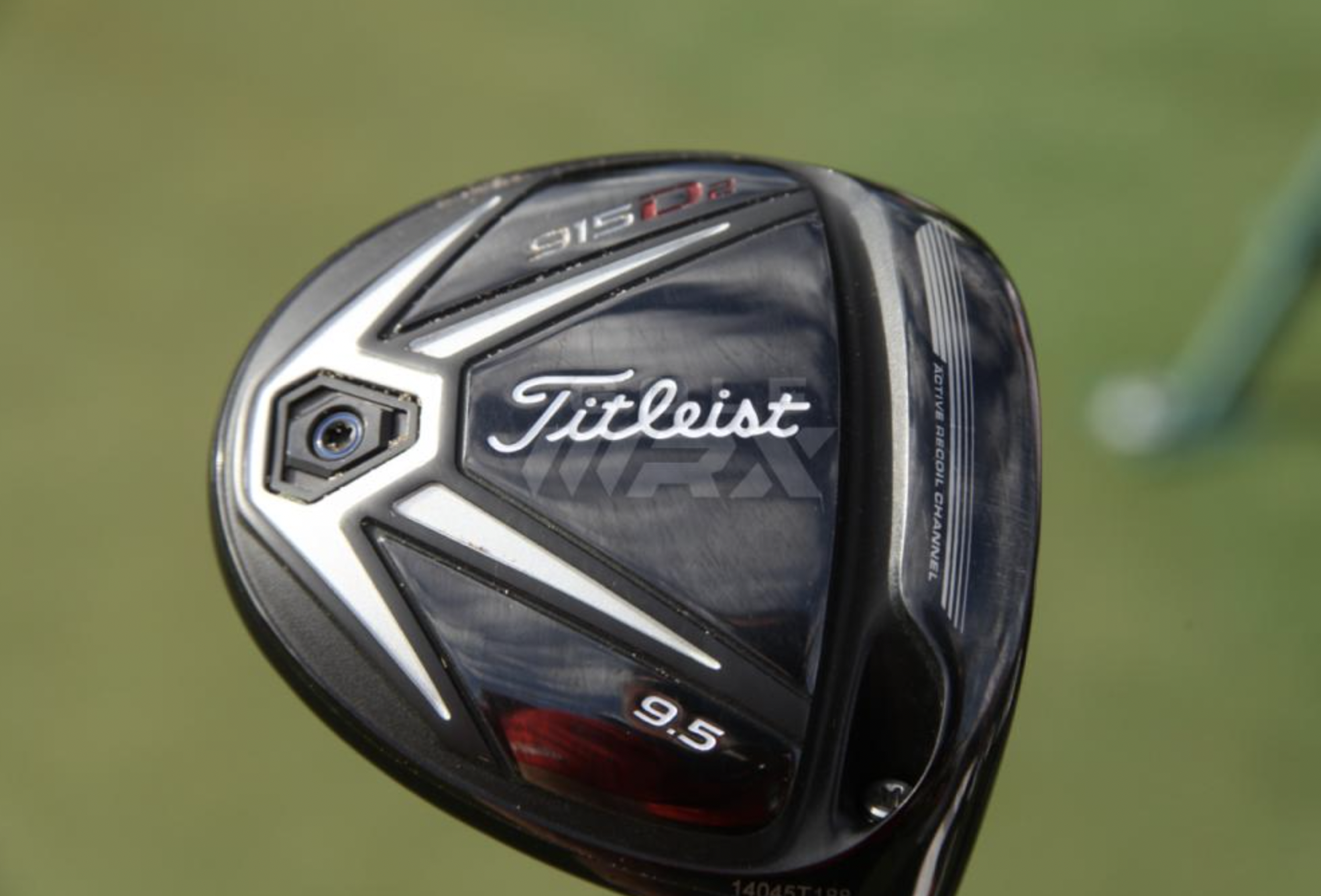
3-wood: Titleist 915F (15 degrees) Buy here.
Shaft: Graphite Design Tour AD DI 7 X
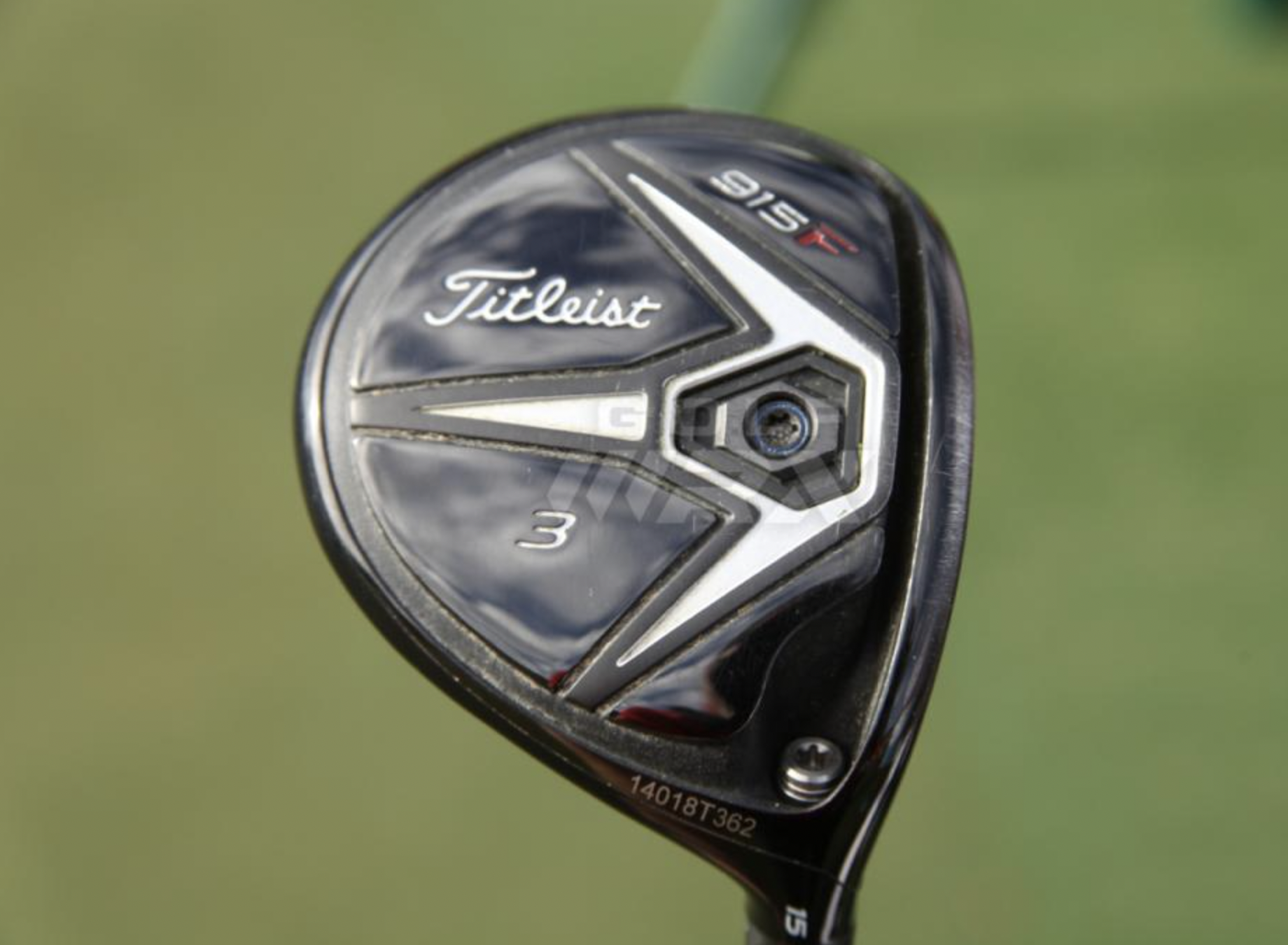
Hybrid: Titleist 915HD (20.5 degrees) Buy here.
Shaft: Graphite Design Tour AD DI 95 X
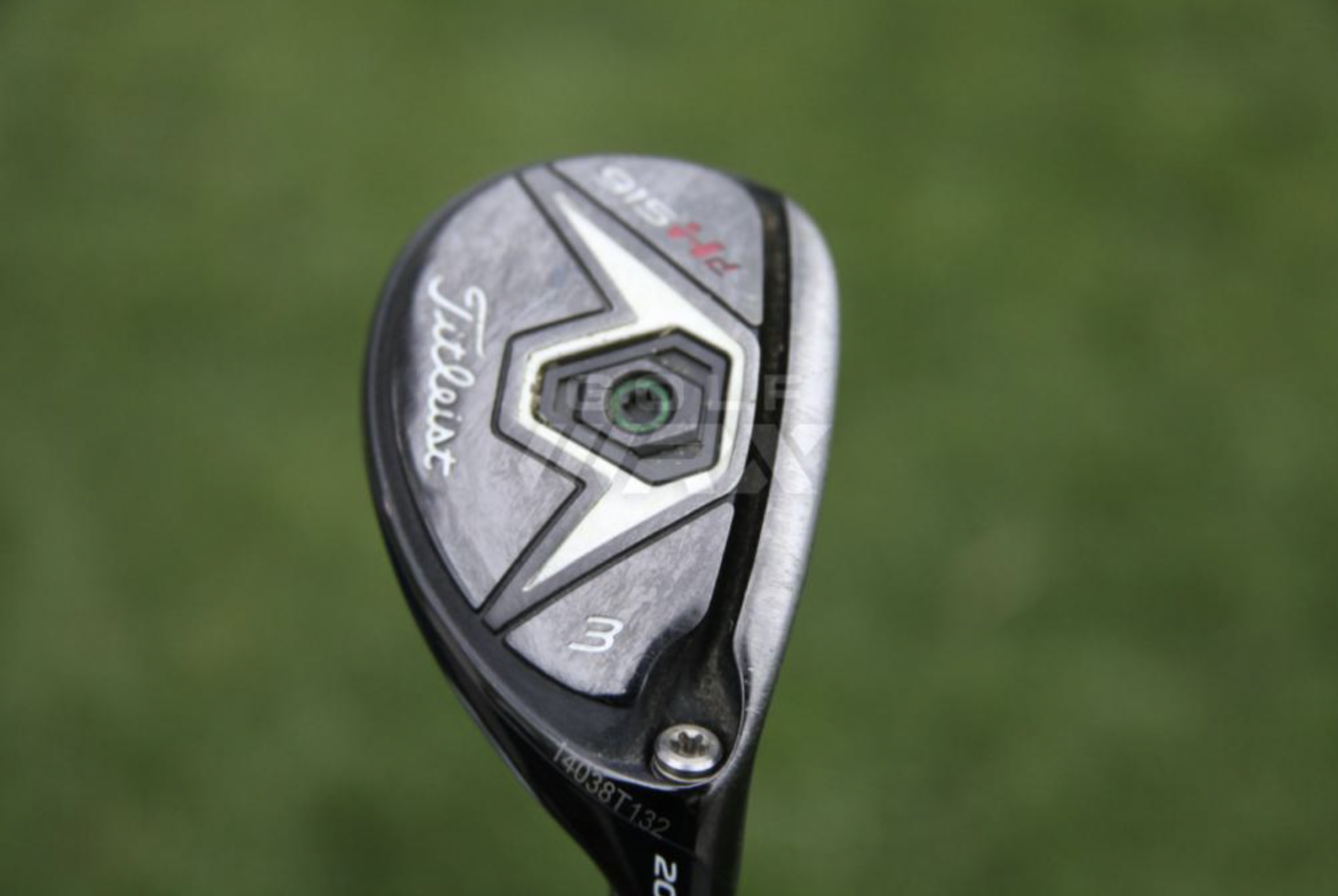
Irons: Titleist 714 AP2 (4-9) Buy here.
Shafts: True Temper Project X 6.0
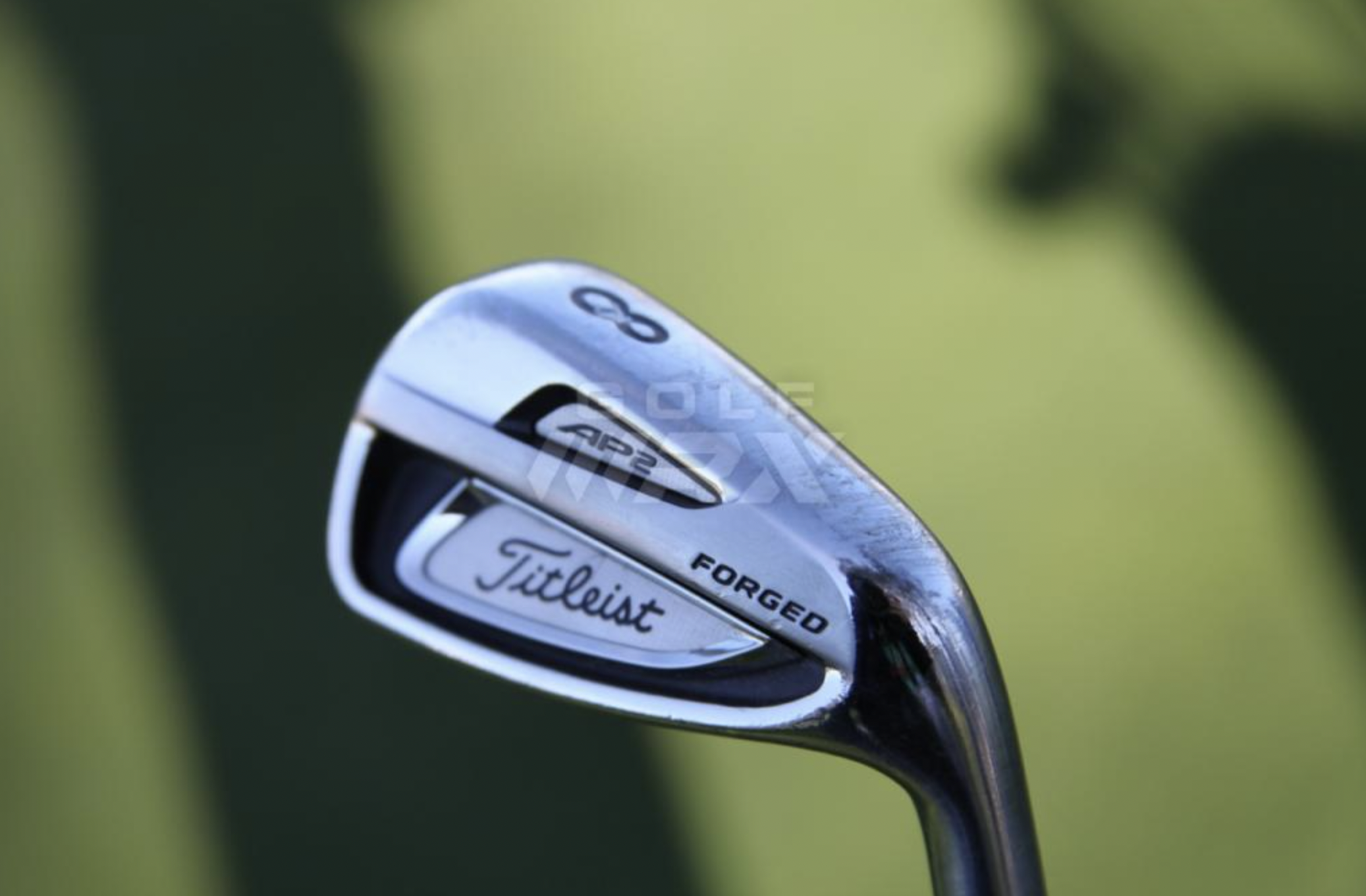
Wedges: Titleist Vokey Design SM5 (46-08F, 52-08F, 56-10S, 60-04L) Buy here.
Shafts: True Temper Project X 6.0
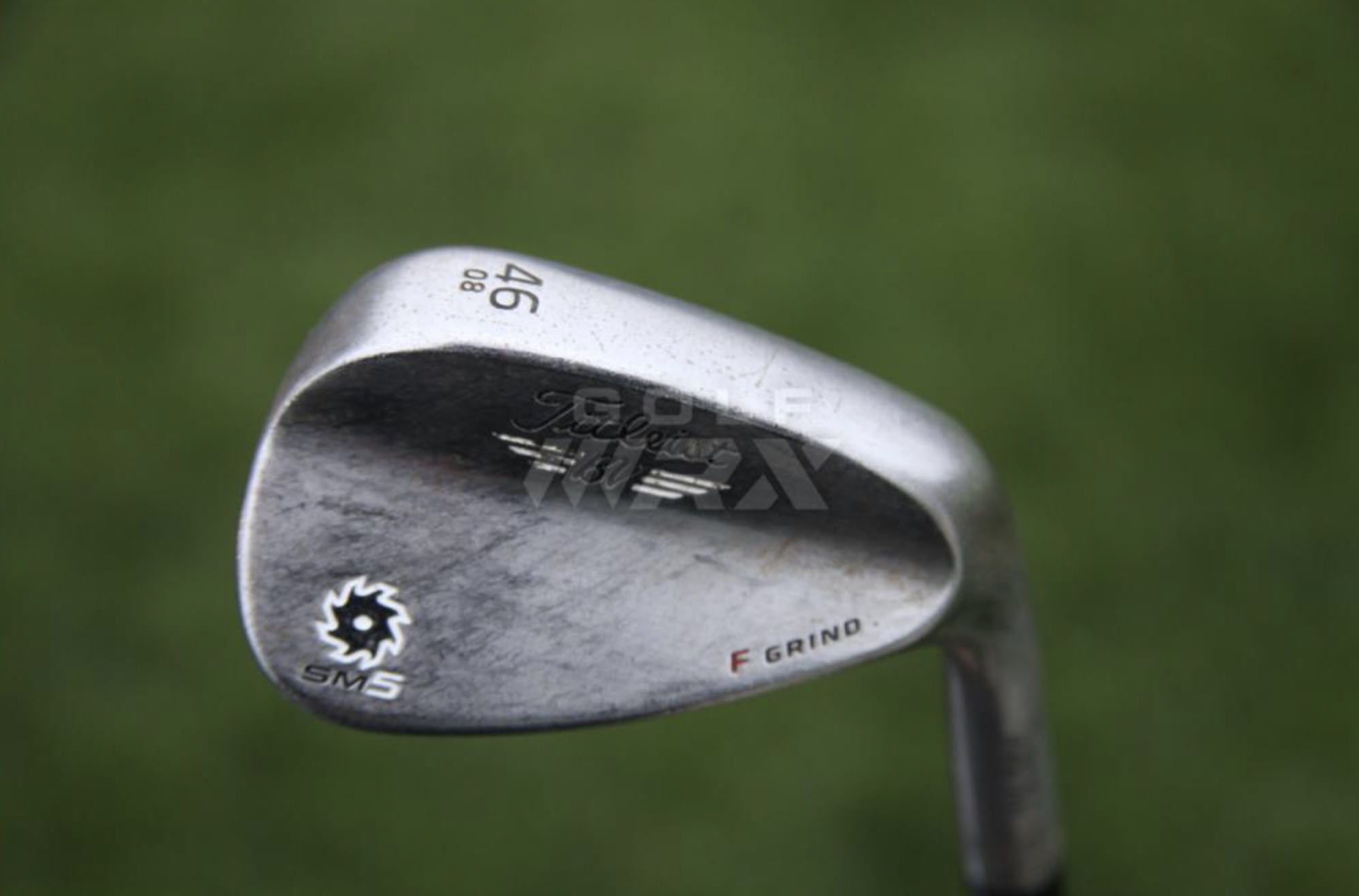
Putter: Scotty Cameron 009 Prototype Buy here.
Grip: SuperStroke Flatso Ultra (Black/White)
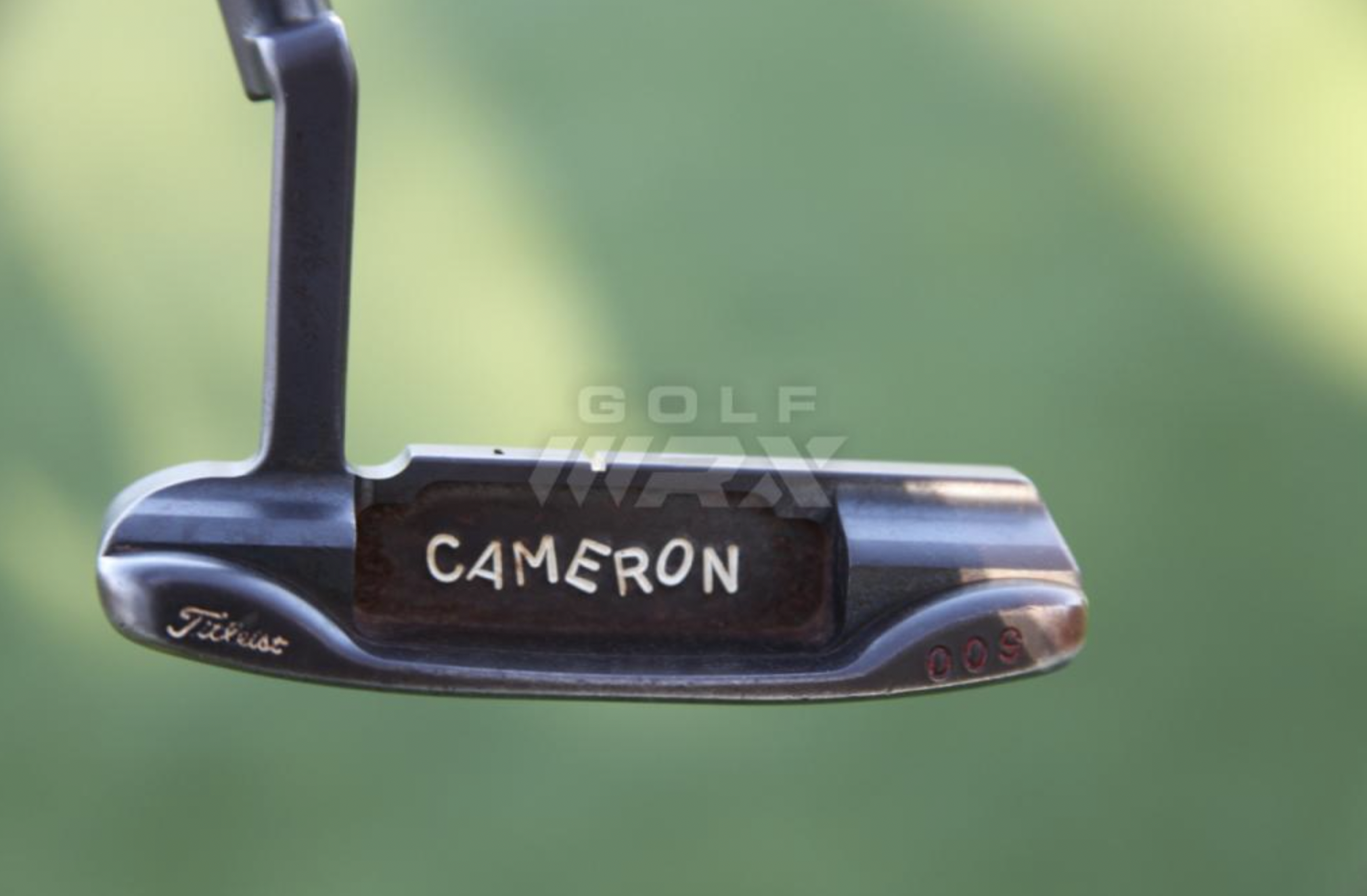
Ball: Titleist Pro V1x
Check out more photos of Jordan Spieth’s 2015 WITB here.
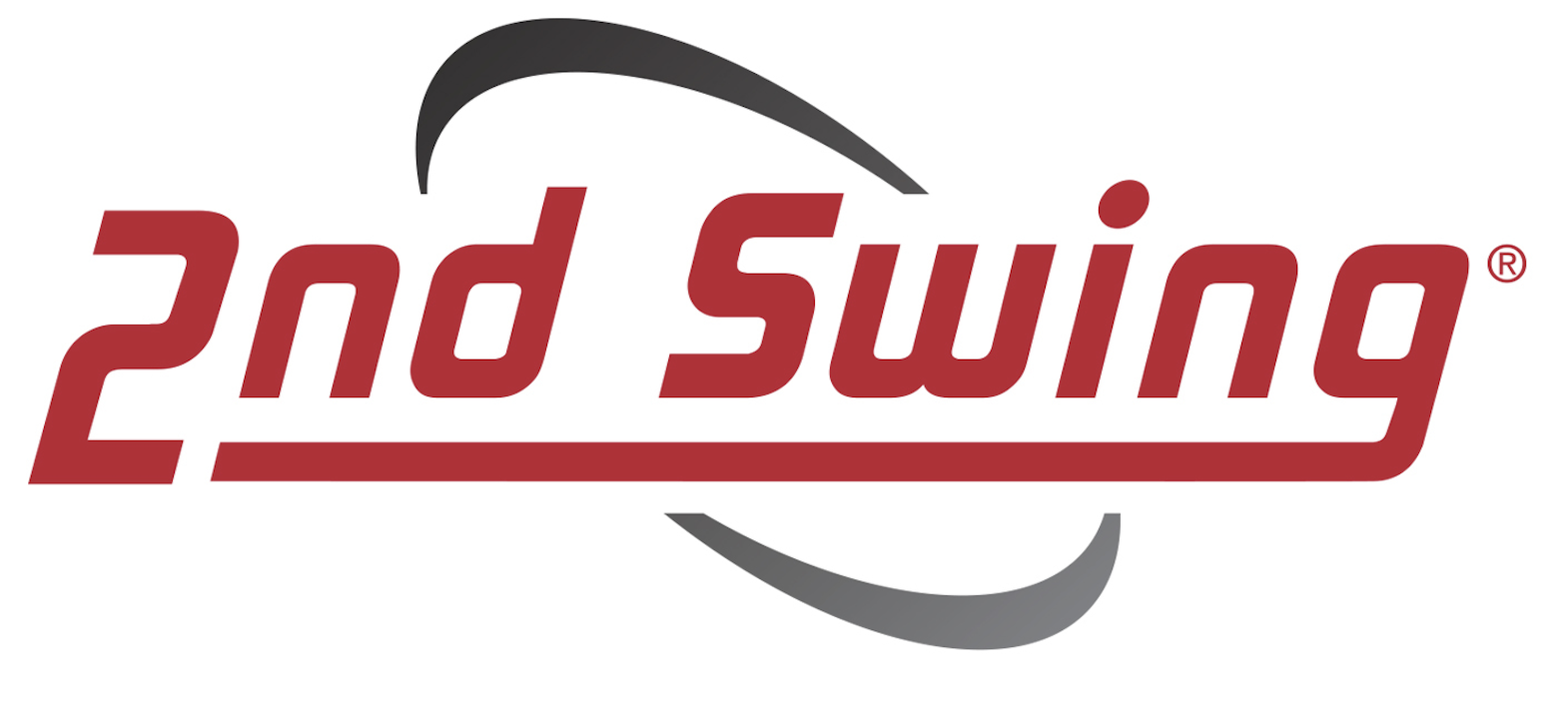
WITB Time Machine is presented by 2nd Swing Golf. 2nd Swing has more than 100,000 new and pre-swung golf clubs available in six store locations and online. Check them out here.
- LIKE2
- LEGIT3
- WOW0
- LOL0
- IDHT0
- FLOP1
- OB0
- SHANK0
-

 News1 week ago
News1 week agoExperts on understanding ground force and how shoes can impact your golf game
-

 Equipment2 weeks ago
Equipment2 weeks agoMiura launches new forged wedge series
-

 19th Hole3 days ago
19th Hole3 days ago‘You’re right, we’re always wrong!’ – Sergio Garcia receives warning during Open qualifier
-

 19th Hole3 weeks ago
19th Hole3 weeks agoRory McIlroy releases statement following crushing U.S. Open loss
-

 19th Hole3 weeks ago
19th Hole3 weeks agoTour pro says Rory McIIroy needs to replace caddie Harry Diamond following U.S. Open collapse
-

 19th Hole3 weeks ago
19th Hole3 weeks agoBryson explains last minute driver head switch and says he ‘probably shouldn’t have changed’ despite U.S. Open win
-

 19th Hole3 weeks ago
19th Hole3 weeks agoBryson gives a detailed explanation of why he puts his golf balls in Epsom salt
-

 19th Hole2 weeks ago
19th Hole2 weeks ago‘If Steve Williams was Rory’s caddie…’ – Tiger Woods’ ex-coach highlights key moment in Rory McIlroy’s U.S. Open collapse

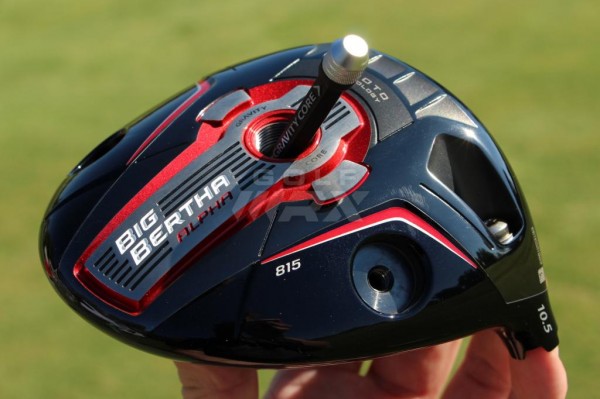
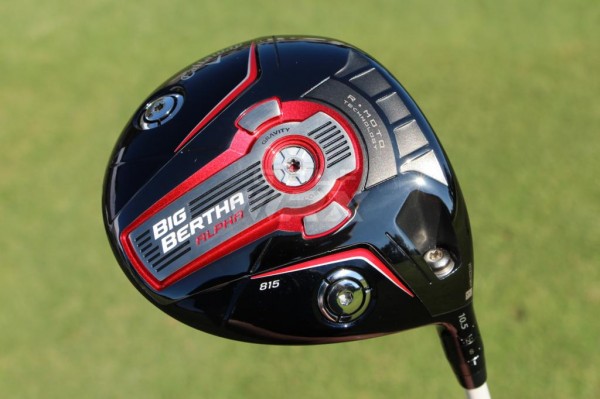
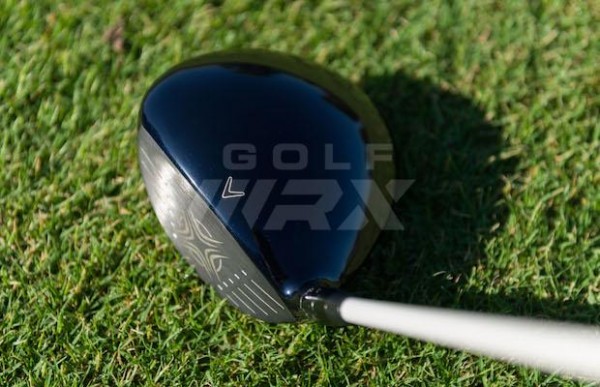
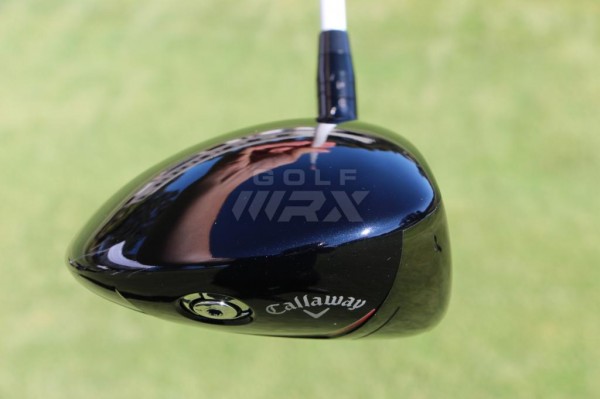
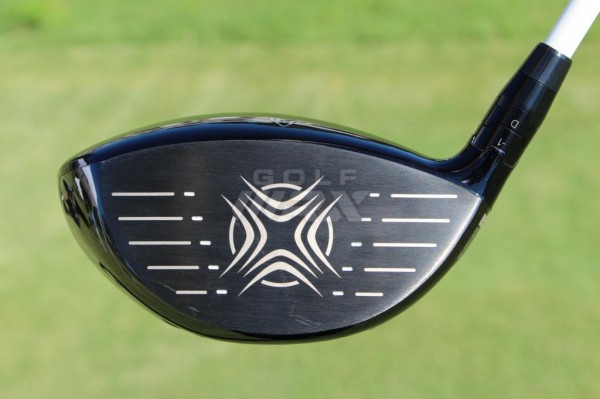
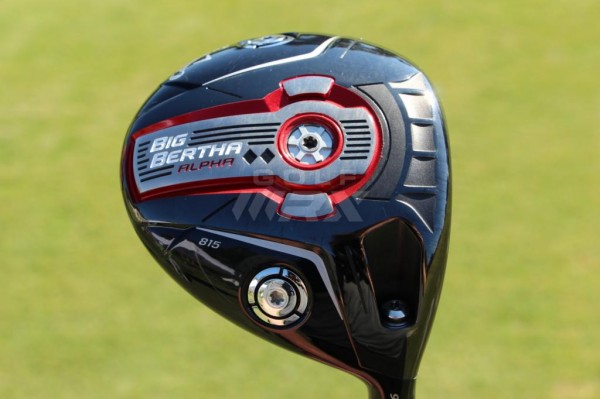
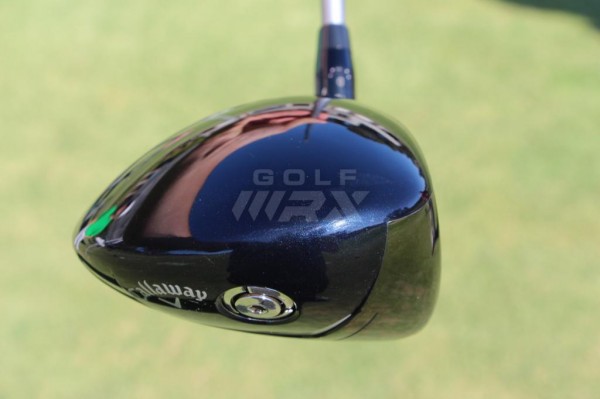
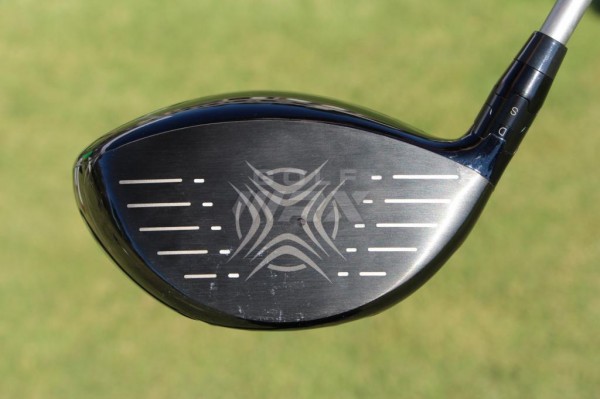
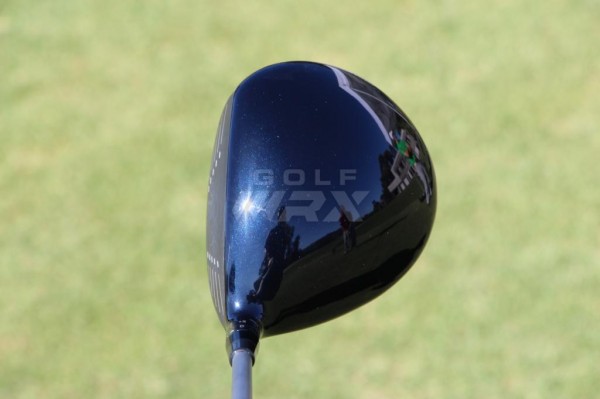
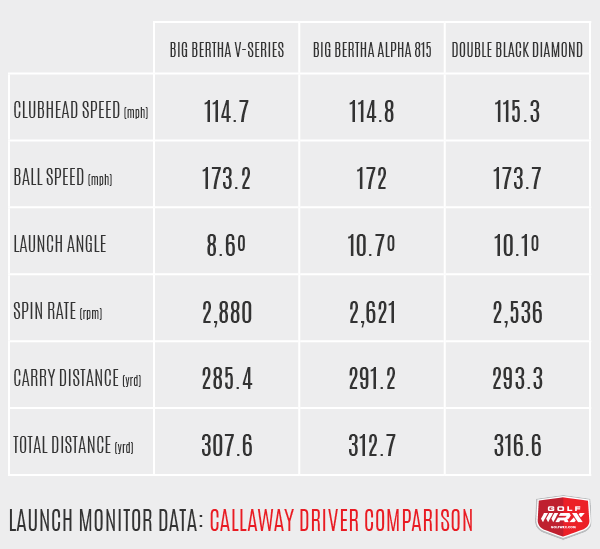
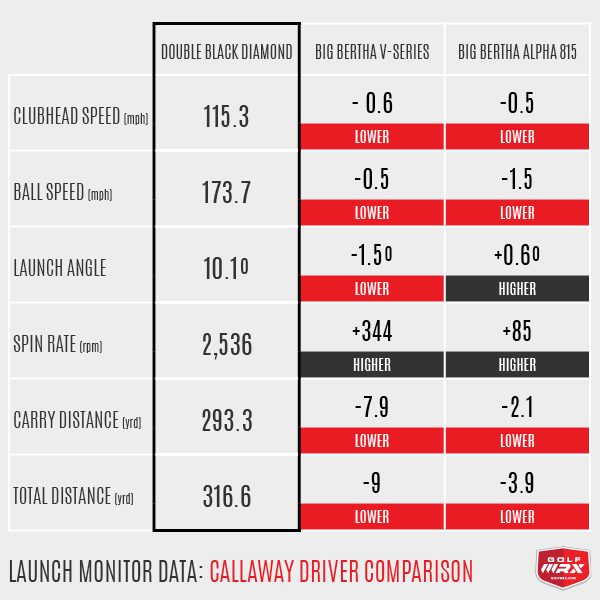
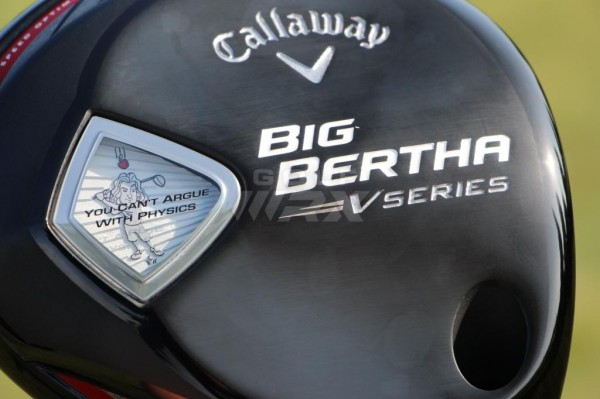
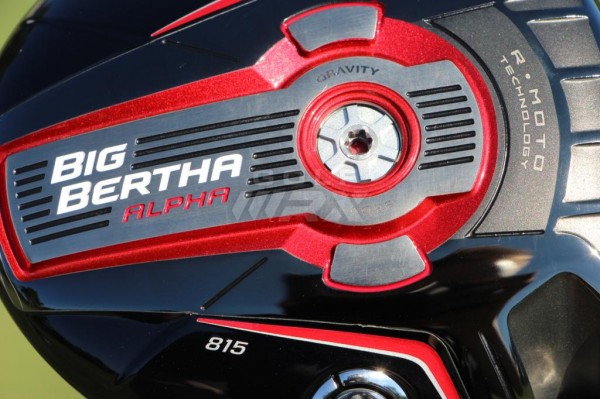
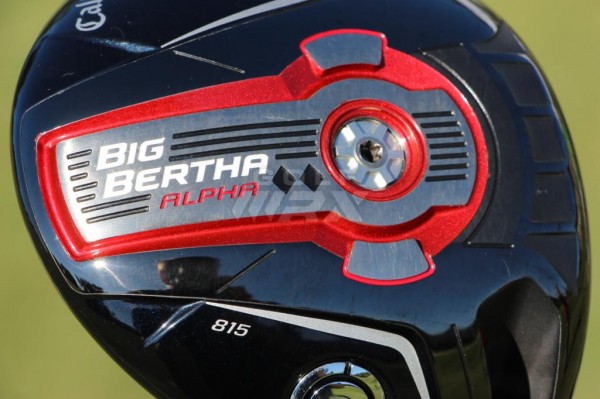

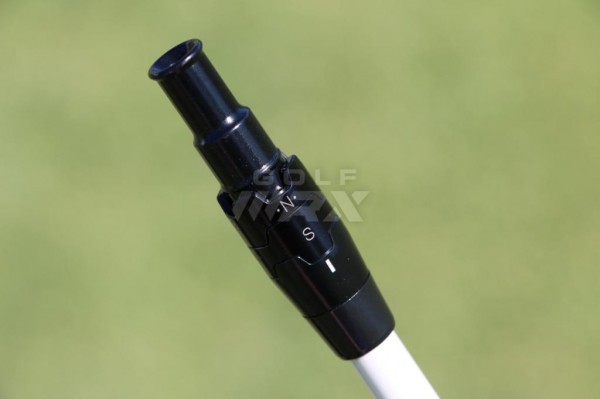


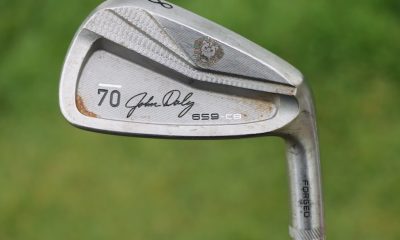

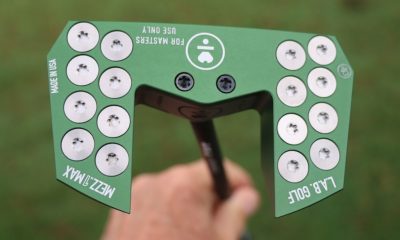

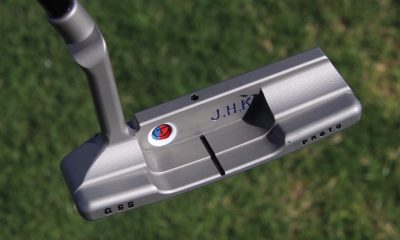



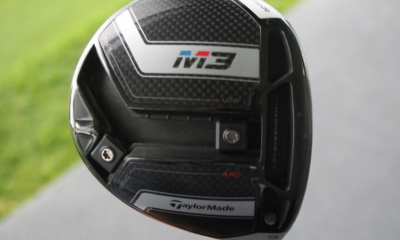

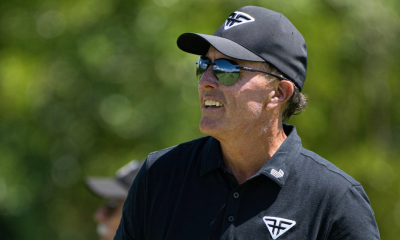


















A.West
Aug 19, 2016 at 3:02 pm
Two years later – I just bought this driver on Amazon from Calloway. Alpha 815, Speeder 565 regular flex shaft, 10.5 loft. Great deal, under $150, replacing my Calloway Costco “X hot” set driver, which apparently isn’t really an X hot driver after all. Tried out the Alpha 815 on my SkyTrak LM I’ve got a swing speed of maybe 91-92 mph, getting a carry distance of 210 to 230. Accuracy no worse than my prior driver, possibly more stable and more supportive of confidence. Feels and sounds a bit better. The adjustability will be fun to experiment with.
richard
Aug 6, 2015 at 10:24 am
I just put a dbd in play yesterday. I have been using my trusty r11s tp for a few years now and just hadn’t found anything I liked better, including last year’s alpha which I tried but quickly sold. However, the new (now old!) 815 dbd was great, a very noticeable performance improvement, at least for me. I can’t tell if the club is longer, although my drives were at least as long as they normally are, but what I really noticed was the good trajectory, and most of all, the lack of sidespin…All my drives were pretty much where I wanted them with little sidespin. The one bad drive I hit (last driver of the day) didn’t go very far, but even that one was straight although it felt like it wanted to hook like crazy…but it stayed just barely off the fairway in good shape. So while the new 816 might be even a little better, for now I think callaway has put out a great product in the 815 dbd…
Marc Dodd
Nov 13, 2014 at 5:09 pm
Rumour has it that the 815 stands for august 2015, when this driver will go and be replaced by another driver
Pingback: Golf Clubs – Our Selection | Romney Warren Golf Club
alex
Oct 21, 2014 at 12:44 am
cant wait for the callaway 616 irons to come out and the new PRO U2 ball from callawy too
jim
Oct 25, 2014 at 6:12 pm
ya I use to like callaway not any more probably going to buy the 915
Desmond
Oct 19, 2014 at 10:24 am
The V Series is NOT a lower launching club, not in lofts over 10.5. The 9 degree is a different animal with slightly different characteristics for stronger players. That will launch/spin lower.
I use the 10.5 V Series head, and in the stock shaft, it launches high with a positive angle of attack. With the Fuji 565 Shaft, I need to add +1 of loft to receive similar results.
Swingblade
Oct 13, 2014 at 12:27 pm
Perhaps I am missing something. I could find no test data regarding dispersion. With the G30 tests dispersion was one of the main factors to evaluate. It seems only distance matters here. Since the PGA recently released the numbers relative to how few pros actually birdie from the rough, it seems it is time for us normal golfers to figure out that the fairway is what matters. Period. 10 or 15 yards longer is not a big plus if the ball is in the rough.
Mr Poopoo
Oct 3, 2014 at 8:57 pm
Black is the new white, blue, orange, red…
JOEL GOODMAN
Oct 8, 2014 at 8:07 pm
I AM CURIOUS AS TO THE RESULTS WITH A NORMAL PLAYER THAT HAS A 90 MPH SWING SPEED. ALSO HOW SOON WILL CALLAWHAT DROP THESE AND BRING OUT IT;S NEWEST GREATEST MOST FANTASTIC REMARKABLE NEXT THING DRIVER—I would guess–next month and these will go on sale at half price. Its all just so much horse manure for the average golfer who will not, cannot, and would not buy a new driver every other month.
Sammy Moon
Oct 9, 2014 at 9:30 am
If you feel that way, why even waste making the comment?
Desmond
Oct 19, 2014 at 10:26 am
Buy the V Series in the 10.5, cut the stock shaft to 45 inches, and have fun. Too many people worry about price. Find your driver.
David
Nov 10, 2014 at 10:21 pm
Ahhhhh Desmond. That is the most sensible advice I have seen on a golf website for a number of years. You are absolutely correct.
Kerbox
Nov 20, 2014 at 2:02 am
Even better, cut it 43-44 inches.
Mr Poopoo
Oct 3, 2014 at 8:57 pm
Looks like the Alpha I’ve been eyeing is due for another price cut soon.
Boat
Oct 3, 2014 at 8:17 pm
The most important factors for ALL drivers are ballspeed and launch angle. I’ve seen all types of testing on different launch monitors and real life testing where the difference between 2000rpm and 3000rpm on well struck shots is 3 yards, but in most cases is around 1.9 yards. If you are hesitant to believe me, simply check out Justin Rose’s Driver video by Rick Shiels on YouTube and have a close look at his numbers. Simply adjusting your spin loft in your own swing is the easiest and cheapest way of lowering spin if it really bothers the golfer that much.
marcel
Oct 16, 2014 at 7:26 pm
i would trust Justin Rose as he hits near identical shots.
Chris C
Oct 3, 2014 at 7:43 pm
Thank you for your test results. That said, I am disappointed that you did not add the BB and Alpha to your test. The results might have shed some light regarding whether newer=better.
Zak Kozuchowski
Oct 3, 2014 at 10:37 pm
The only way to know is to do your own testing. Everyone is different.
Martin de Porres
Oct 5, 2014 at 3:14 am
Zak, any chance you know the head weight for the 815 aplha and the titleist 915 drivers.
Zak Kozuchowski
Oct 7, 2014 at 9:23 am
Martin,
The DBD has a total weight of about 330 grams, while the Alpha 815 has a total weight of about 320 grams. That should put the head weights in the 200-to-205 gram range, with the DBD being a few grams heavier.
Golfraven
Oct 3, 2014 at 6:06 pm
I find the head cover and the crazy release cycle most interesting. Otherwise I am stocking with the new 915 – bring it on.
mhendon
Oct 3, 2014 at 6:37 pm
Yeah I like the retro head cover but I doubt its real leather like an Iliac.
RAT
Oct 3, 2014 at 4:11 pm
when will they have the Saturn model ready?
Dave S
Oct 3, 2014 at 1:41 pm
Robocop’s driver?
MHendon
Oct 3, 2014 at 1:04 pm
Here’s the thing my fellow WRXer’s. The USGA and R&A agreed to a COR limitation of .830 all the way back in 2002 that went into effect in 2006. No driver legal for tournament play shall exceed that. This lead to a theoretical smash factor of 1.5 however not truly achievable under real life conditions sense you would need launch conditions of 0 degrees and 0 RPM of spin to achieve it. Every ball speed has an optimal launch angle and spin rate to achieve maximum distance. Knowing this once one maxes out they’re launch conditions there is no more room for improvement through equipment. Also maxing out your launch conditions is next to impossible unless you have a very consistent tour like swing. In other words you can buy every new driver that comes out and you’re still going to suck unless you practice.
Thomas Beckett
Oct 4, 2014 at 4:10 pm
Wrong again MHendon. The maximum theoretical smash factor is 2.0. All things being constant increasing the mass of a driver head 10% will increase smash factor approximately 1.7%. Assuming a perfect strike, if enough mass could be added to a driver to offset the efficiency lost by dynamic loft a smash factor higher than 1.5 is possible without violating .83 COR limit.
MHendon
Oct 4, 2014 at 9:18 pm
Ok thomas you are suggesting using a club much heavier or stronger lofted than anything on the market. I couldn’t find the article I got my original information from or I would post the link but I couldn’t find anything suggesting a theoretical smash factor of 2.0. I did find this that suggest the posibility of a smash factor slightly over 1.5 but it’s not practical. http://www.tutelman.com/golf/ballflight/smashfactor.php
Thomas Beckett
Oct 5, 2014 at 12:03 am
Wrong again MHendon. I was responding to your incorrect statement you have once again passed off as a fact. You wrote the USGA and R&A imposed a .83 COR limitation which is sort of true, it’s actuall.822 with a tolerance to .83 but I let you slide on that one. Followed by,”this lead to a theoretical smash factor of 1.5 however not truly achievable in real life.” That is also incorrect on both statements. I never claimed my argument to be practical, just possible. Pings G30 is 20 grams heavier than my driver and in testing I’ve found it to have about 3 to 4% higher smash factor so I would say my argument is practical and you are wrong as usual. A change in any varaible of club mass, ball mass, COR, or contact point changes smash factor. People like you MHendon once protested that the earth was flat. A practical driver beating 1.5 smash factor may not happen in your lifetime but it is possible. It’s mathematically possible so open your mind to the possibilities or be bound by your limitations.
MHendon
Oct 5, 2014 at 1:51 pm
What are you a lawyer Thomas looking for every possible angle to prove your case. Clearly my initial statement was made based off tournament legal equipment not what is theoretically possible and impractical. Once again I don’t know where you’re getting your information but I’ve posted a link to some of mine along with getting some of my information from Frank Thomas the former USGA technical director. So Thomas if you’re going to try and discredit me how about providing some proof other than your own words.
Thomas Beckett
Oct 6, 2014 at 1:26 am
Sorry MHendon, I’m not a lawyer, im an engineer in the aerospace industry, but that really has no bearing on the matter. Before we go any further I suggest you read your source more carefully as it disproves every point you have made. Arguing with you reminds me of an old saying,” you can lead an ass to water but you can’t make him drink it.”
mhendon
Oct 6, 2014 at 7:04 pm
So Thomas you’re making a point that you can theoretically achieve a smash factor of 2.0 with a metal ball bounced of a perfectly flat metal surface fixed to the ground. So what does that have to do with golf. Seams to me you’re making an irrelevant point just for the sake of argument. Thanks anyway but I’ll take a beer!
Dan
Oct 8, 2014 at 5:51 pm
I liked the bickering between you two, and just wanted to chime in and say that, I have seen a smash factor of 1.52 on a launch monitor, and the player was using a 909 D3, with an upgraded shaft. I can’t comment on any of the variables that go into this formula such as ball or head weight, club head or ball speed. I just remember very clearly that I was told 1.5 was perfect and what I saw was better than perfect.
Ian
Jan 6, 2015 at 11:57 pm
I’m a scratch sr am player. I’m using a ping g30 with swing speed around 104mph. I can rev it to 110mph but that’s not game speed. I frequently see smash factors of 1.52 on TrackMan. In fact, I did it today!
Adam
Oct 10, 2014 at 5:00 pm
My goal for a smash factor is 1.5 – 1.52 If you’re getting up there, figure out the best shaft for your release/swing bc you should be smoking it.
Currently swing the Alpha (2014) and it’s a beat stick. Went with the X-flex Fubuki and will likely change to something better for me. (Lower kick point, etc…) Compared to my old gamer, dropped about 500-600 RPM in spin which took my distance an extra 20+ yards.
Not gonna shell out for these by any means, but for my first Callaway driver I cant think they’re hitting anything but home runs here. Very much enjoy the BB Alpha and the Gravity Core is a game-changer for sure.
marcel
Oct 17, 2014 at 12:30 am
Smash factor is Club head speed translated into ball speed right after the impact. the ball speed will be affected by elements but that has not been taken into consideration. Only the speed after leaving club where launch conditions and spin has little impact. As the ball is not constantly propelled, spin and the drag will result for ball to drop and continue its travel on the ground until stopped.
Jack Nicklaus said that to hit ball further you need either swing faster or swing better… so you can hit ball farther if you slow down and control swing and impact better. so in theory the driver that reduces spin will allow hit the ball farther without increasing smash factor.
also the ball has to be relevant to the club speed to not deform excessively ball which in turn wont travel farther due to imperfect flight properties.
Grant
Oct 3, 2014 at 11:33 am
I’ve been thinking about the complaint that many (including myself) have about the cost of new drivers, and the major OEM constant releases of new equipment. At first glance, it’s crazy for us to play upwards of $450 every 6 months to have the latest and greatest from our favorite companies only to have them release something “better”. But then I thought about the other sport that I play: ice hockey. Just like drivers from Callaway, TaylorMade, etc., companies like Reebok, Easton, Bauer, and CCM come out with new flagship hockey sticks twice yearly, and the prices for them are in the $279-$320 range. The only difference is that these sticks break after some use, so players go through 5+ sticks a season. Those that aren’t willing to hand over the big $$$ for the top end stuff buy older models at discount, or less expensive sticks. And that’s just one piece of equipment that gets updated pretty frequently from those companies.
My point: I was mad at the golf industry, but then I realized that this happens in all sports, and marginal gain can only be achieved with frequent launches and a lot of reps (repetitions) on new products by pros and joes. Just me coming to peace with where my money goes.
I’ve been playing the Callaway RFX for the last two-ish seasons, but I’ll go through a testing process at a club fitter to see what new club/shaft technologies work best for me next season.
steve
Oct 3, 2014 at 8:28 pm
You make a point. But doe’s it apply to basketball? Baseball a good quality glove can last years or the worlds most popular sport soccer. I think it is based on case by case or sport by sport
Brandon
Oct 3, 2014 at 11:24 pm
I’m a Hockey player also and have asked myself would a new $300 stick help me get more goals in a game compared with my 1 year old stick, absolutely not. I had a similar awakening with Golf. A new $450 driver will not help me shoot lower scores which at the end of the day is why I play Golf. It sure is fun to buy new Golf equipment but:)
marcel
Oct 16, 2014 at 7:33 pm
its so easy to jump on the equipment band wagon and keep on spending… or get a golf coach and improve with stick you playing. BTW good on your ice hokey game. big fan here!!!
Mike
Oct 3, 2014 at 10:16 am
So do the people bickering about life cycles really want Callaway and TM to come out with a driver every two years like other companies? The funny thing is that those people would hate it if it happened. Everybody wants more choices, it is fun and brings buzz to the golf industry and this website. Get over it.
Dave
Oct 2, 2014 at 10:03 pm
I agree with you Steve. Every year it’s longer and straighter moved this or that around. Basically reinventing the wheel with a new paint job. Most good golfers can hit anything. It’s the Indian not the arrow. If people want to waste their money on stupid marketing go ahead their money. I don’t care personally buying something and then it being outdated 6 months later. However, if one is wise enough like stated above one can get a decent deal on an outdated driver. The technology may change but its going to be very marginal at best. Until the powers that be let the club manufactures do something outside the rules nothing new will happen of any magnitude. Thus the longer and straighter marketing bull some fall for. To each their own.
benseattle
Oct 2, 2014 at 6:23 pm
I think we should all thank Callaway for having the courage to blow right by that ancient old $400 milestone and jack up the prices…. because they can. $449 and $499 for more of the same old “12 yards longer” crap is going to appeal to a handful of 60-year-old grandpas with money to burn who just happen to be gullible enough that They’ll Believe Anything.
I suggest you do what I did earlier this spring. Take your current gamer into a launch monitor and compare it with the four or five hottest, latest, most technically-advanced of the new models and then compare the numbers. If you really do pick up 5, 10 or 15 yards with a 2014 model… well, congratulations. But more likely you’ll discover what I did: that none of the new stuff is significantly superior in either distance or dispersion when compared to my current gamer. In fact, the 2014 products should be embarrassed: my current driver is a relic from 2006, the MacGregor MacTec!
(Still, I can’t help but be tempted the renowned Ping G20 that’s now on sale everywhere for all of $179!)
Desmond
Oct 2, 2014 at 6:01 pm
I find the results with the V Series as a bit odd … in stock setup, at 10.5, I find that club launches high with a tad too much spin, but piercing.
With the 10.5 and the Speeder 565, I find the club launches lower (that’s expected with the shaft), and I must loft up to 11.5. With that combo, I get screamers.
I question the results with the V Series because I think that club takes a little bit of work to get accustomed to it. It is a different look and setup than the 815 drivers. A different feel, look, etc.
I’m not surprised that the BBV spins more, just the low launch … surprising, and not in line with what I’ve found in the 565 Shaft. That makes me think familiarity will breed better launch numbers.
ImRight
Oct 2, 2014 at 3:47 pm
When people stop buying the new clubs that come out every few months maybe clubs companies will stop with that marketing plan. It’s really getting out of hand though. I remember when I played in HS in the late 90’s and there was one wood and iron line release a year.
Russell
Oct 2, 2014 at 1:38 pm
How about the dispersion between the drivers? Which one was more accurate? Which one was the most spread out? How different were they? They don’t normally put these numbers in reviews and I’m not sure why. It’s not all about swing speed and distance. It’s about control. Tell me which one performed better by hitting it closer to the line or target out of the 10 or so swings. How close to that line did it deviate?
This would be the helpful data needed to make an informed purchase in addition to the data already presented here.
Marco
Oct 2, 2014 at 11:12 am
Aldila Rogue…no upcharge?? I liiiike !!!!
Evan
Oct 2, 2014 at 8:45 am
Keep drinking the Kool Aid! Transformer era of golf club design, not sure I was too far off when I said that months ago. There are no performance gains, just releasing clubs every 3 months to generate more revenue. BTW, premium shafts do not mean premium results. Wake up and stop wasting your money!
Robeli
Oct 2, 2014 at 12:37 pm
Agree. Go buy almost any 2012 driver at dirt cheap specials and you will get very close the same results as these drivers. The year 2012 was very good year for drivers. I still play mine from 2012 and keep hitting these new ones every time I get the chance, and none of the 2013 or 2014 made that big a difference to justify a change.
SBoss
Oct 2, 2014 at 7:52 am
The company’s like Callaway and TMAG don’t realize how destructive they are to their own brands. The consumer confusion factor alone is not worth it. It’s hard to keep all of their offerings straight.
Ping and Titleist deal with consumers in a planned, straightforward manner. We know that Ping has an “I” series and a G series. They have a logical number sequence and a predictable release schedule. When I buy a G30 driver, I know the G35 will be out in 2 years. They will do what they can to upgrade performance in that 2 years. Same goes for Titleist.
Callaway is a copycat company, trying to knock off TMAG with their product release strategy. Essentially, they’ve knocked off a lousy strategy. Brilliant. The CEO should be shown the door and they need to get back to connecting with customers and a predictable release strategy that actually shows some respect for the customer. More product does not equate to BETTER product.
Bob
Oct 4, 2014 at 1:06 pm
Too bad PING released the G25 last year and released the G30 this year. Doesn’t look like a 2 year cycle to me. Your G35 will be released next year as well. Also, the only reason why Titleist waits every 2 years is because they have that little white ball you lose every round so they don’t have to release clubs. PING doesn’t have a 2 year cycle anymore.
Large chris
Oct 2, 2014 at 2:40 am
Not very relevant but I played with an absolutely terrible golfer a couple of months ago who was admiring my x2 hot. He was thinking about getting it as an upgrade from his xhot. He was never anywhere near a fairway and either topped or skied everything.
ron
Oct 2, 2014 at 9:52 am
You’re right.. not relevant at all!
Largechris
Oct 3, 2014 at 1:44 pm
Probably not relevant to Americans that is, but to us Brits we call that sort of thing ‘ironic’
ryan
Oct 2, 2014 at 12:45 am
they are really crazy.. almost every month I’ve heard that Callaway new clubs. I sold the callway x2hot pro driver few months ago. I surely think it was a brriant choice..
now my ping i25 driver longer and more forgiving than x2hot pro.. bye callway..
J
Oct 2, 2014 at 12:29 am
Hideous. Still not touching a 450+ dollar driver with someone else’s wallet…
It’s exhorbant and ridiculous.
Gonzo
Oct 2, 2014 at 12:34 am
Some people want the best and will pay large sums of money for it. Others can wait 2 years and get it for 199 or less
dapadre
Oct 2, 2014 at 5:57 am
More like 2 months nowadays.
Charles
Oct 1, 2014 at 10:38 pm
I AM IRON MAN
Jimmy
Oct 1, 2014 at 10:28 pm
Not impressed with the names but the shaft selection is nice ill stick w my g30 and motore speeder ts 7.2 combo
LB
Oct 1, 2014 at 10:02 pm
Well written article with the numbers to back up the tech. Nice job Zak.
MHendon
Oct 2, 2014 at 12:36 am
I’m not so sure about those numbers. Two of the three drivers have a smash factor above 1.5 which would imply there COR is above the legal limit of .830
Rich
Oct 2, 2014 at 8:57 pm
Give me break. Really? A company the size of Callaway is going to 1. Produce a driver that is non conforming and 2. The USGA and R&A are going to let them sell it? Are you smoking weed or something?
MHendon
Oct 3, 2014 at 12:46 pm
Exactly… That’s why I said I wasn’t so sure about the numbers supposedly produced by these drivers at the beginning of the article.
Rich
Oct 3, 2014 at 7:31 pm
Ok then. Explain to me why a 0.830 COR limit means smash factor maxes out at 1.50?
Thomas Beckett
Oct 4, 2014 at 5:01 pm
1.5 smash factor is not a usga imposed limit nor is it a barrier. COR is just one of the variables that affects smash factor. Here is the formula
SF = Vball / Vclubhead = 1 + e / 1 + m/M cos(loft) * (1 – 0.7*miss)
e=COR
m=ball weight
M=club mass
Thomas Beckett
Oct 4, 2014 at 5:02 pm
Hopefully that will help your argument and educating process for MHendon.
MHendon
Oct 5, 2014 at 1:34 pm
Well thank you Thomas I see you got your information from the same place I did. To be clear the theoretical 1.5 smash factor is based off what is considered tournament legal equipment. Yes you can get above the magical 1.5 but it would require a much heavier club head than anyone makes at a very strong loft say about 5 degrees. Hence the real world limit meaning what a human can achieve using tournament legal equipment is approximately 1.494. That’s why the numbers listed on these drivers seem suspect to me.
Thomas Beckett
Oct 6, 2014 at 11:47 pm
There are several places that talk about smash factor but I used your source because I was hoping you read it, I was wrong in that respect or perhaps you don’t understand. What I found interesting about your source was the chart showing approximately what driver head weights would be necessary to break 1.5 smash factor. I could only find a weight limit on the ball therefore if you you use the formula you provided from your source the theoretical smash factor is 2.0 and a 1.5 smash factor can be broken. If the goal were to simply get the highest smash factor with legal equipment to break a 1.5 smash factor it could be done easily, but to do it practically without current performance loss is another story. My only objective is to point out your incorrect assumptions passed off as facts to other people. Read your research if you actually do any and work the formulas before you comment.
Leslie Chow
Oct 7, 2014 at 2:57 am
I’ve enjoyed this thread so I decided to do some research of my own. I was curious if MHendon was full of hot air or if 1.5 was the barrier. Thomas, after looking at the formula I figured that if breaking 1.5 SF were possible it is going to take a golfer using the heaviest head on the market with the lowest loft and lightest golf ball. Since a heavier ball produces less resistance to drag it will be longer companies maxed out the legal limit of the ball so ball weight is a constant. As far as the loft and weight of the club that sounded like long drivers would have the advantage because their driver heads are reinforced to withstand massive impacts and what I found was that there are quite a few long drivers that have broken 1.5 smash factor on trackman and their data is all over the Internet. Rather than provide a list of all the sources I would like to produce the easiest and the link is Ping.com. The opening video with Bubba Watson hitting his tour 44.5″ Pink G30 driver with a legal COR, MHENDON focus, hits the drive with clubhead speed of 120.8 and a ball speed of 184.5 giving him a smash factor of 1.5273. So Thomas it turns out your theory on the heavier ping drivers producing higher smash factors and breaking 1.5 SF is not only mathematically but actually possible is in fact CORRECT and therefore with extreme pleasure I can once again say . . . WRONG AGAIN MHENDON.
mhendon
Oct 7, 2014 at 1:20 pm
Hey my old buddy Leslie. Read the link I posted above. It clearly states a PGA pro using tournament legal equipment can best hope for a COR around 1.47. Your are providing information from an equipment company looking to sell their equipment based off one of their tour players impact data. The INDEPENDENT article above states any smash factors above 1.5 are most likely equipment measuring errors. My information comes from very credible sources I am not a physicist nor a mathematician and don’t claim to be. So you guys are trying so hard to discredit me you’re grasping at straws. But in the end you’re trying to discredit my sources which are supposed experts.
Thomas Beckett
Oct 8, 2014 at 3:54 pm
Nobody is trying to discredited your source MHendon, only the limited and finite manner in which you are applying the information your source provides. All the information to prove 1.5 SF is not a limit is in your sources article but for some reason you still cannot comprehend its contents so here is an email response to a question I asked your source directly if exceeding a 1.5 Smash Factor is possible. Directly from your source MHendon here is Daves response.
Sure!
“Tournament legal” will require a COR of no more than 0.83. (If that
were not the case, higher smash factors would be easier to get.)
Let’s also factor in that the ball is 46 grams. (Lower weight gives a
higher smash factor, BUT you’ll get less distance from the ball for a
given launch velocity. So nobody even tries to do that.)
When you plug that into the equations, you can get a full 1.5 smash
factor from a head of 214g at a 5 degree loft. For 1.52, the head
weight is close to 230 grams.
Hope this helps.
DaveT
In conclusion to settle this once and for all with you MHendon, what Dave is saying is that for a driver head weight of 214g and 5 degrees of loft or at 10 degrees of loft and 229g of head weight, both achieve a 1.5 SF, any increase in weight or decrease in loft breaks a 1.5 SF. One thing that is pretty important distinction to make in the SF formula isn’t the actual loft of the driver, rather the dynamic loft at impact thats used in the calculation so its possible for a driver heads with 5 and 10 degrees to both be at the same dynamic loft at impact. When factoring in the golf ball weight for calculation of SF, the assumption is being made that the ball is at the max legal weight but a lighter ball will improve smash factor. Its entirely possible for a long drive club with 3 to 5 degrees of loft or a “short driver” with 9 degrees of loft to have enough head weight to exceed a 1.5 SF using equipment available today. The reason I mention the short driver is because it requires a lot more additional head weight to obtain a proper swing weight and would be very easy for someone with the right impact conditions to achieve a SF above 1.5 but the tradeoff would be less club head speed due to the shorter shaft. Since the game of golf is about distance and direction, from a practical application to distance smash factor is just one of several variables a golfer can change as each golfer is different and for some a lighter head sacrificing SF but significantly increase club head speed maybe more beneficial whereas a golfer with a lot of speed and poor direction might try to increase SF with a shorter heavier club which maintains distance through better contact to make up for the loss in club speed due to the shorter shaft. As I stated in my earlier post and confirmed by your source , the theoretical smash factor limit is 2.0 and the smash factor limit is governed only by the variables in the formula and is not 1.5 as you have claimed.
MHendon
Oct 8, 2014 at 6:02 pm
LOL Wow Thomas I got to hand it to you. I think you’re more stubborn than even I am. I never would have even considered that by reducing the weight of the ball you could achieve a smash factor of 1.5 or slightly above while staying in the legal limits of equipment so I guess I’ll have to concede this one to you. However as you said know one would do that because the ball wouldn’t go as far. So at least maybe you will concede that my initial post that got this whole debate started is in fact valid. The numbers suggested for these three Callaway drivers are suspect because for one I doubt they where using a ball lighter in weight than standard and generally Callaway has been know for making lighter weight heads to try and increase speed. Although I will concede I don’t know the weight of these three heads. It’s been fun Thomas.
Dan
Oct 8, 2014 at 5:57 pm
Those are averages, you should work on your reading comprehension.
hebron1427
Oct 1, 2014 at 5:09 pm
sooo….they made a big bertha alpha with different sole graphics?
CT
Oct 2, 2014 at 12:46 am
Yes. It’s the old we moved 3 grams of weight around to increase MOI just for you trick. Won’t be beating my alpha aftermarket shaft combo.
Callaway turning into TM. Makes me sick!
Don
Oct 1, 2014 at 4:46 pm
Meh. Looks like Callaway is going the route of Tour Exotics esthetics. Compare this with the new Titleist 915 and you can see how much of a toy this looks.
SMH
Oct 1, 2014 at 4:10 pm
lmfao very sad and embarrassing, you can tell some TMAG hack is running the show over at callaway releasing all this new crap like they are
Shawn
Oct 1, 2014 at 4:02 pm
I wish these weren’t blue.
enrique
Oct 1, 2014 at 8:24 pm
Are they blue? I thought it was the reflection of the sky but then saw some blue flake. It’s better not be blue. I never played the alpha because it was blue.
CT
Oct 2, 2014 at 12:46 am
They are a dark blue
billy
Oct 1, 2014 at 2:33 pm
SWEET!! Looks like most of the shaft upgrades are made for Callaway though. Sure they will be good, just hope they have all of them in fitting carts with all flexes.
Sean
Oct 1, 2014 at 5:27 pm
Authentic real deal shafts are what I’m told…….no “made for” junk.
At $500 bills that’s the least they can do.
Current Alpha working very well so I’ll be impressed if either of these models outperform it.
Heard the Aldlia Rogue Silver shaft is the bomb but I’m not familiar with it…….yet!
Good luck Callaway.
WILSON
Oct 3, 2014 at 5:55 pm
I hit it in a 915 D3, that club was absolutely the bomb. Blown away.
Danny
Oct 1, 2014 at 2:20 pm
Holy crap, Callaway taking over Taylormade as kings of the new driver every month
steve
Oct 1, 2014 at 3:50 pm
What how can you not love a new driver every 3 months? Since my 975d I have been getting a new driver every year and adding 12 yards with each driver. Do the math started at 290yds with the 975d 15 years ago. 15 new drivers 12 added yards each. 15×12=180 more yards then the 975d. Holy crap i am hitting it 470yds. Love it, keep it coming
Bryan
Oct 1, 2014 at 4:09 pm
Well said!
mhendon
Oct 1, 2014 at 7:13 pm
and the bet part is that 975d was $399.99 15 years ago and you’ll be able to get this new Callaway for $199.99 in a year if you can stand to wait.
Rich
Oct 2, 2014 at 9:02 pm
You are just a troll now. You keep saying the same stuff on every new equipment story. If you’re not interested in the new equipment (you keep saying nothing is better than your 10 year old driver), then stop reading the equipment stories and move onto something else. Your comments were valid the first couple of times but now you’re boring.
steve
Oct 2, 2014 at 9:39 pm
You are the definition of a troll. You think the points of view are boring, but you respond to them to start argument. Who keeps reading something over and over they think is boring? Do you watch a tv show and complain how boring it is week after week. If you don’t like an opinion ignore or go away, time to grow up.
Rich
Oct 3, 2014 at 7:33 pm
Thanks Steve. You’re right, I should know better. Thanks for setting me straight.
Ty Webb
Oct 4, 2014 at 12:07 am
+1
Couldn’t have said it any better Rich.
MHendon
Oct 5, 2014 at 10:18 pm
Hmmm where did I say my 10 year old driver is as good as the new stuff. I think what I was saying basically is you can get NEW golf equipment cheaper now than you could 15 years ago. Seams a little ironic to me because people keep complaining about the cost of the game. Hey but glad to know I have a fan Rich! Oh and my driver is only 3 years old.
Dale Doback
Oct 4, 2014 at 9:37 am
What’s the point of posting that MHendon? Its a no brainier that if you wait until a product is discounted or discontinued it will be cheaper. The 975d may have been 399.99 15 years ago but it’s resale value now is around $2.50. Maybe people should wait 15 years and then they could really get a bargain, good luck getting home on the short bus.